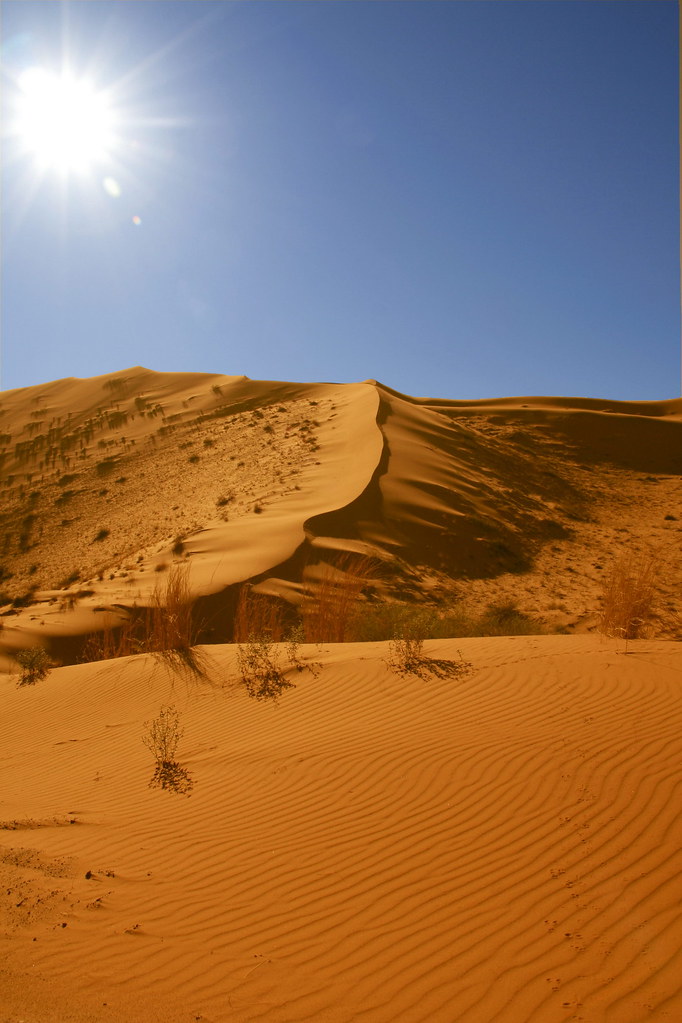The Transfer Of Heat
Heat, put simply, is the movement of molecules, or kinetic energy. Heat transfers in three different ways.
First, heat transfers through conduction. This is transfer through direct contact, like when you touch a cookie sheet right out of the oven and burn yourself. The heat transferred directly from the hot metal of the cookie sheet into your hand, so it transferred through conduction.
 Second, heat transfers through radiation. This is transfer through the air, like when you hold your hand close to a candle and feel the heat coming - radiating - off of it. The heat transferred through the air, from an area of higher kinetic energy to an area of lower kinetic energy, so it transferred through radiation.
Second, heat transfers through radiation. This is transfer through the air, like when you hold your hand close to a candle and feel the heat coming - radiating - off of it. The heat transferred through the air, from an area of higher kinetic energy to an area of lower kinetic energy, so it transferred through radiation.Third, heat transfers through convection. This is heat transfer through fluids and the circular movement that results when said fluids are heated from below. Fluids, in this case, refers to both air and water, based on how they move. In convection, the molecules performs a sort of dance, heating up when they are close to the heat source at the bottom and expanding, moving upwards, replacing the colder molecules above, which then fall back down where they are heated and become the warmer molecules, which again move upwards and replace the now cold molecules, continuing the dance.
The Heating Of Our Atmosphere
You see heat transfer in small, everyday things, like cookie sheets and candles, but it also plays a big part in maintaining the comfortable environment we live in. One important way is in the heating of our atmosphere. The atmosphere is heated in two main ways.
First, it is heated by infrared radiation, which radiates directly from the sun and is responsible for about 1% of our heat. This is because very few molecules in the air can actually absorb heat - only water and carbon dioxide can.
Second, it is heated indirectly by visible light, which is absorbed by the Earth's surface and conducted back into the atmosphere. This accounts for much more of the heat in our atmosphere, and this process, reradiation, is why our atmosphere is heated mostly from below.
In addition to these, convection also plays an important part in heating the atmosphere, because once air is heated by the Earth's surface, it begins the convection process.
The Heating Of Our Earth
In class this week, we explored how the sun heats different earth materials in our "Heating The Earth" lab. In this lab, we set up an experiment where we heated containers of sand, water, and air under a sun lamp for ten minutes then turned the lamp off and monitored the samples for an additional ten minutes. We took the temperature of each material every two minutes throughout the entire twenty minutes.
Our results were as follows. The air heated and cooled at a consistent rate, increasing about 1 degree per minute and then cooling at the same rate. The water also heated fairly consistently, if a little bit slower, and then retained its heat longer, only dropping by one degree during the last two minutes. The sand heated slowest of all, increasing only two degrees in ten minutes, but then retained that heat for the entire ten minutes the lamp was off.
Since the materials were exposed to the exact same amount of sunlight - we measured to make sure each one was the exact same distance and same angle away from the lamp - the difference wasn't in the amount of sunlight received, but in the amount of sun absorbed (the specific heat capacity) of each material.
This connects to what we learned in class about the heating of the earth and atmosphere, because the fact that air doesn't conduct heat well also explains why it doesn't it retain it. The results from our sand sample also show why the earth is so much better at absorbing heat from the sun.
The Transfer Of Heat - Example
A specific example of all three types of heat transfer is the process of making tea. First, you heat the water over a flame on the stove, heating the metal kettle by radiation. The water then heats by convection, warming up at the bottom of the pot then rising and replacing the falling cold water above it. Once the water is heated, you pour it in a mug, and let the teabag steep. However, maybe you're excited and drink it too early, burning your tongue as heat from the water conducts directly onto your tongue. To review - heat from the stove flame radiates to the kettle, the water is heated by convection, and the water conducts heat to your tongue when you drink your tea. All while you enjoy the temperature of your house, kept comfortable by the everyday transfer of heat.





